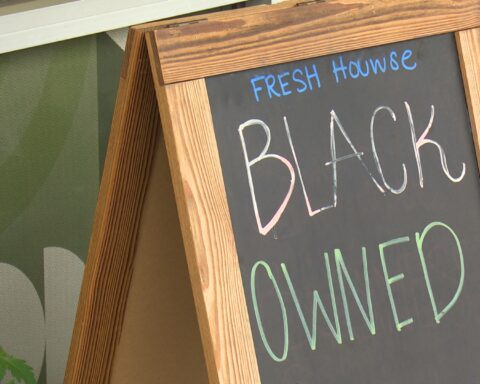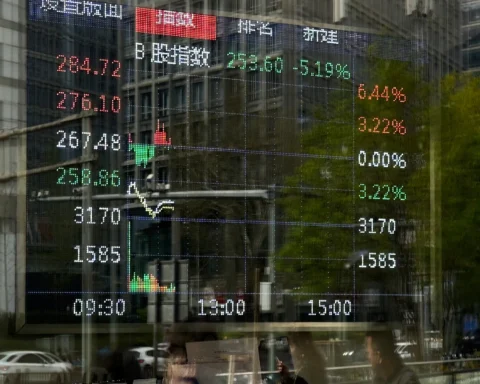By Sean Conlon
Stock futures fell on Thursday after a massive rally on Wall Street spurred by President Donald Trump announcing a 90-day reprieve on some of his “reciprocal” tariffs.
Futures tied to the S&P 500 were fell 1.7%, while Nasdaq-100 futures traded down 2%. Dow Jones Industrial Average futures lost 546 points, or about 1.3%.
The moves come after a historic surge on the Street, where the S&P 500 soared more than 9% for its third-largest gain in a single day since World War II. The Dow Jones Industrial Average also saw its biggest percentage advance since March 2020, while the Nasdaq Composite scored its biggest one-day gain since January 2001 and second-best day on record.
During Wednesday’s session, there was an unusual trading volume of around 30 billion shares, the highest level in history, as per records dating back 18 years.
The rally took off after Trump announced a temporary drop in tariff rates for most countries to 10% for 90 days. Canada and Mexico won’t be subjected to an additional 10% duty, however.
“I thought that people were jumping a little bit out of line,” Trump said. “They were getting yippy, you know, they were getting a little bit yippy, a little bit afraid.”
To be sure, that still leaves this 125% rate on goods from China. Trump said that he thinks the U.S. and China will end up making a “very good deal.”
Despite optimism in response to the 90-day reprieve, some on the Street are skeptical that we may not be out of the woods just yet.
“I think you need certainty,” Mohamed El-Erian, Allianz’s chief economic advisor, said Wednesday on CNBC’s “Closing Bell.” “I think the 90 days, that’s a good period, but quickly people are going to start asking what happens next.”
Others were echoing a similar sentiment amid the market surge, with LPL Financial’s Jeffrey Roach still calling for the potential of more turmoil ahead.
“Market volatility could remain elevated, despite the 90-day pause on tariffs for non-retaliating countries,” said Roach, chief economist at LPL Financial. “Hard data from the early part of the year suggests the economy is slowing, irrespective of trade policy.”
On the economic front, traders are looking ahead to March’s consumer price index reading and weekly jobless claims, due out Thursday before the opening bell. Producer price index data for March will be out on Friday morning.
Japan’s Nikkei jumps over 9% to lead gains in Asia after Trump pauses tariffs
Asia-Pacific markets rose Thursday, following Wall Street’s biggest burst of buying since 2008 after U.S. President Donald Trump announced a 90-day pause on higher tariffs on all nations bar China.
Japanese markets led gains in the region. The benchmark Nikkei 225 closed 9.13% higher at 34,609 while the broader Topix index advanced 8.09% to 2,539.40.
South Korea’s Kospi index surged 6.60% to close at 2,445.06 while the small-cap Kosdaq gained 5.97% to 681.79.
Australia’s S&P/ASX 200 rose 4.54% to end the day at 7,709.60.
Mainland China’s CSI 300 rose 1.31% to end the day at 3,735.32 while Hong Kong’s Hang Seng Index added 2.06% to close at 20,681.78.
India markets were closed for a holiday.
European stocks surge at the open
European shares saw a huge rally at the open on Thursday, with the regional Stoxx 600 index jumping 7% by 8:23 a.m. in London.
Germany’s DAX was 7.5% higher, while banking stocks, up by more than 10%, led sectoral gains.
Trump folded on tariffs ‘under market pressure’ from bonds, Capital Economics says
President Trump folded on his tariff policy Wednesday “under market pressure” and the bond market in particular, according to Capital Economics chief North America economist Paul Ashworth.
Trump resisted the stock market decline, but “once the bond market began to weaken too, it was only a matter of time before he folded on his eye-wateringly high tariffs,” the Toronto-based economist wrote to clients Wednesday.
“Our working assumption now will be that, cowed by the market response, Trump will repeatedly extend the ‘pause,’ meaning that this will end up looking a lot like the 10% universal tariff that he campaigned on,” the note said. Neither the U.S. nor China are likely to back down in coming days, and a full rollback to the level of tariffs before Inauguration Day is unlikely, although talks between the two nations will happen. Ashworth, who began at the London-based researcher in 2001, thinks the effective tariff rate on China is likely to settle at about 60%.
Partly as a result, and even allowing for deflation effect from lower oil prices, “we assume U.S. inflation will now peak at 4% or so,” Capital Economics wrote, or double the Federal Reserve’s 2% target. “U.S. GDP growth should be 1.0% to 1.5% annualized over the next 4 quarters.”
Market reaction was ‘absolutely not’ a factor in tariff pause, Lutnick says
Commerce Secretary Howard Lutnick said on “Fast Money” that the selling in financial markets over the past week was “absolutely not” a factor in the tariff pause on Wednesday. Earlier in the day, before President Trump announced the change, the S&P 500 had fallen to just above its bear market threshold, while the 10-year Treasury yield briefly traded above 4.5%.
CNBC’s Melissa Lee also asked Lutnick if U.S. companies could be confident in the direction of policy going forward. The Commerce chief responded that firms should carefully consider their exposure abroad and predicted upcoming announcements of companies building products in the U.S.
“I think it’s important for companies to understand that the countries they do their business in matter. If you do business in China, or you do business with a country that basically is just a proxy China, then you’re going to have to deal with the fact that President Trump does not think we are being treated correctly,” Lutnick said.
Constellation Brands shares fall after company issues weak guidance
Shares of Constellation Brands fell more than 3% in extended trading Wednesday after the Modelo owner’s full-year forecast missed analysts’ expectations.
The company expects to post comparable earnings of $12.60 to $12.90 per share for fiscal 2026, while analysts surveyed by LSEG were anticipating $13.97 per share for the period.
Earnings and revenue for its fiscal 2025 fourth quarter came in better than expected, however.
Small caps have their best day since March 2020
Small-cap stocks got a much-needed bounce Wednesday after President Trump announced a 90-day pause on some U.S. tariffs. The Russell 2000 surged 8.7% to end the day at 1,913.16, marking its biggest one-day advance since March 24, 2020. That day, it rallied 9.4%.
S&P 500 futures open little changed after historic rally
S&P 500 futures were relatively unchanged Wednesday evening after stocks saw monumental gains following President Donald Trump’s tariff reprieve.
Shortly after 6:00 p.m. E.T., futures tied to the S&P 500 were about 0.1% higher, while Nasdaq-100 futures fell about 0.2%. Futures tied to the Dow Jones Industrial Average gained 57 points, or 0.1%.



